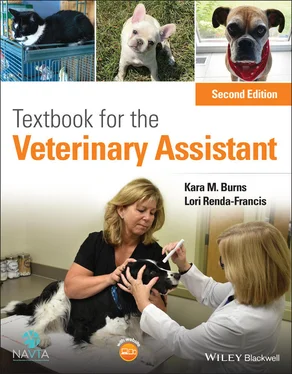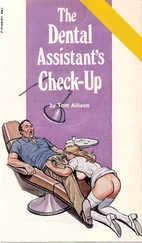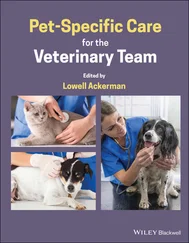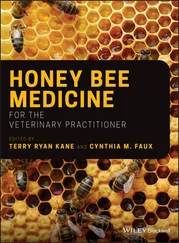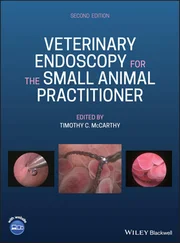1 Cover
2 Title Page
3 Copyright Page
4 Dedication Page
5 Acknowledgments
6 About the Companion Website
7 Chapter 1: Introduction to the Veterinary (or Assistant) Profession Ethics References
8 Chapter 2: Medical Terminology Medical terms Prefixes Suffixes Root words Common abbreviations used in veterinary medicine References
9 Chapter 3: Anatomy Anatomical directional terms Skeletal system Branches of science Body systems External anatomy Common veins Muscles Internal organs Urogenital system Internal structures of the thorax Conclusion References
10 Chapter 4: Behavior, Handling, and Restraint Social behavior Animal body language Fear Free® Identification Avian restraint Reptile restraint Rabbit restraint Handling rodents References
11 Chapter 5: Office Procedures and Telephone Techniques Telephone techniques Office procedures References
12 Chapter 6: Nutrition Overview Proteins Carbohydrates Fats Vitamins Minerals Water Palatability Recommendations Weight management Summary References
13 Chapter 7: BreedsCat breeds Dog breeds References
14 Chapter 8: Breeding and GeneticsIntroduction Dogs Cats Determining gender in puppies and kittens Breeding management References
15 Chapter 9: General Nursing Care and Physical Exams Taking a history Physical exam Determining and recording vitals General nursing care Common diseases References
16 Chapter 10: Exam Room Procedures Recognizing ectoparasites Nail trimming Ear cleaning Eye medications Anal glands Bathing animals Administering oral medications Maintaining exam room equipment
17 Chapter 11: Immunology Innate immunity Acquired immunity Cell‐mediated immunity Vaccination References
18 Chapter 12: Laboratory ProceduresLaboratory considerations Safety Equipment Quality control Sample collection References
19 Chapter 13: Pharmacology Drug classifications Storage and disposal of drugs References
20 Chapter 14: Radiology Radiology safety measures and guidelines Cleaning screens Labeling, filing, and storage of radiographs Radiographic positioning Processing Quality control Conclusion References
21 Chapter 15: Surgical Assisting The sterilization process Wrapping a surgical pack Cold sterilization Instruments Suture material and suture needles Gowns and Drapes The sterile field Preparing for surgery Opening and passing sterile items Preparing the patient Postsurgical procedures Surgical positioning Surgical monitoring Surgical log Surgical room conduct
22 Chapter 16: Avian, Exotics, and RodentsAvian Reptiles, Amphibians, and Fish Rabbits Guinea pigs Mice and rats Gerbils Hamsters Ferrets Hedgehogs Sugar gliders Chinchillas References Resources
23 Chapter 17: Equine Skeletal system Digestive tract Nutrition Behavior and handling Nursing care and husbandry of horses References
24 Chapter 18: Preparing for Internships and Employment Interview Resumé writing Cover letter References Resources
25 Chapter 19: Inventory What will be inventoried in your clinic or hospital? A well‐run pharmacy The want list The veterinary assistant’s role Drug inventory Human versus computer: both needed! Organizing inventory References
26 Chapter 20: Euthanasia and Pet Loss The five stages of grief References
27 Chapter 21: Client Management Evaluating your clients Client management; essential skills for the veterinary assistant Employee roles References
28 Chapter 22: Medical Records References
29 Chapter 23: Occupational Safety and Health Administration What is the Occupational Safety and Health Administration? Material safety data sheets OSHA labeling of secondary containers OSHA inspections Common OSHA veterinary violations Fines References
30 Chapter 24: Pet Health Insurance References Resources
31 Glossary
32 Index
33 End User License Agreement
1 Chapter 9Table 9.1 Body system abnormalities.Table 9.2 Normal pulse rates.Table 9.3 Number of deciduous and permanent teeth in dogs and cats.Table 9.4 Timeframe of tooth eruption in dogs and cats.Table 9.5 Disposing of hazardous materials.
2 Chapter 11Table 11.1 Vaccine terminology.
3 Chapter 12Table 12.1 Anticoagulants and cap colors.
4 Chapter 13Table 13.1 Pharmacology terms and definitions.Table 13.2 Controlled substances categories.Table 13.3 Common abbreviations used in prescriptions.Table 13.4 Endoparasites.
5 Chapter 14Table 14.1 Manual processing of radiographs.
6 Chapter 15Table 15.1 Common sutures used in veterinary medicine.
7 Chapter 17Table 17.1 Energy in carbohydrates.
8 Chapter 24Table 24.1 Comparison of two pet insurance companies for a 6‐month‐old inta...
1 Chapter 3 Figure 3.1 Median plane. Figure 3.2 Anterior/posterior. Figure 3.3 Medial/lateral. Figure 3.4 Proximal/distal. Figure 3.5 Anatomical terms. Figure 3.6 Rostral. Figure 3.7 Cranium. Figure 3.8 Vertebral formula. Figure 3.9 Bones of the forelimb. Figure 3.10 Bones of the hindlimb. Figure 3.11 External anatomy of the head. Figure 3.12 External anatomy, anterior portion. Figure 3.13 External anatomy, posterior portion. Figure 3.14 External anatomy, middle portion. Figure 3.15 Veins. Figure 3.16 Saphenous vein. Figure 3.17 Muscles. Figure 3.18 Internal organs. Figure 3.19 Gallbladder/liver. Figure 3.20 Urinary system. Figure 3.21 Female anatomy.
2 Chapter 4 Figure 4.1 Rope leash. Figure 4.2 Application of gauze muzzle (1). Figure 4.3 Application of gauze muzzle (2). Figure 4.4 Light restraint. Figure 4.5 Tender hold during physical examination. Figure 4.6 Relaxed cat facial expression. Figure 4.7 Feline towel restraint. Figure 4.8 Cat restraint bag. Figure 4.9 Lateral recumbency restraint. Figure 4.10 Fear and stress in (a) cats and (b) dogs. Figure 4.11 Restraining a bird with a towel. Courtesy of Kara M Burns, LVT, ...
3 Chapter 5 Figure 5.1 Health‐care team member and client. Figure 5.2 Name badge alternatives.
4 Chapter 6Figure 6.1 BCS descriptors for dogs in a five‐point system.Figure 6.2 BCS descriptors for cats in a five‐point system.
5 Chapter 8Figure 8.1 Pregnant bitch.Figure 8.2 Water sac presented.Figure 8.3 Puppy being born.Figure 8.4 Placenta.Figure 8.5 Breaking sac.Figure 8.6 Bitch nursing pups.Figure 8.7 Gender identification.
6 Chapter 9Figure 9.1 Taking pulse in the femoral artery of a cat.Figure 9.2 Arrows pointing to the femoral artery of a cat.
7 Chapter 10Figure 10.1 Overgrown nails. Figure 10.2 Tick.Figure 10.3 Louse.Figure 10.4 Flea dirt.Figure 10.5 Dog nail anatomy.Figure 10.6 Cat nail anatomy.Figure 10.7 Resco.Figure 10.8 Cat nail trimmer.Figure 10.9 Scissor trimmers.Figure 10.10 Human nail trimmer.Figure 10.11 Kwik Stop.Figure 10.12 Silver nitrate sticks.Figure 10.13 Ear anatomy.Figure 10.14 Ear cleaning.Figure 10.15 Eye drops.Figure 10.16 Eye ointment.Figure 10.17 Anal gland anatomy.Figure 10.18 Finger cot.Figure 10.19 Giving oral medication to a dog,Figure 10.20 Administering liquid medication to a dog.Figure 10.21 Administering liquid medication to a cat.Figure 10.22 Administering a pill or capsule to a cat.Figure 10.23 Ophthalmoscope.Figure 10.24 Otoscope.Figure 10.25 Interchangeable handle.Figure 10.26 Thermometer.Figure 10.27 Thermometer.
8 Chapter 12Figure 12.1 Binocular microscope. Courtesy of Lori Renda‐Francis, LVT, PhDFigure 12.2 When performing a fecal floatation, be sure to mix stool materia...Figure 12.3 This allows for the parasite eggs to float to the surfaceFigure 12.4 The eggs are collected from the surface using a glass slide. The...
9 Chapter 14Figure 14.1 Radiographic positions.
10 Chapter 15Figure 15.1 Autoclave.Figure 15.2 Indicator strip.Figure 15.3 Surgical pack prior to autoclaving.Figure 15.4 Surgical pack after autoclaving.Figure 15.5 Surgical scissors.Figure 15.6 Hemostats.Figure 15.7 Thumb tissue forceps.Figure 15.8 Suture cassette (spool).Figure 15.9 Individual suture pack with needle.Figure 15.10 Swaged‐on needle.Figure 15.11 Suture needles.Figure 15.12 Steps to folding a gown.Figure 15.13 Steps to folding a gown.Figure 15.14 Steps to folding a gown.Figure 15.15 Steps to folding a gown.Figure 15.16 Steps to folding a gown.Figure 15.17 Steps to folding a gown.Figure 15.18 Steps to folding a gown.Figure 15.19 Steps to folding a gown.Figure 15.20 Closed gloving technique.Figure 15.21 Closed gloving technique.Figure 15.22 Open gloving technique.Figure 15.23 Open gloving technique.Figure 15.24 Open gloving technique.Figure 15.25 Open gloving technique.Figure 15.26 Sterile pouch.Figure 15.27 V‐trough.Figure 15.28 Table made into a V shape.Figure 15.29 Sharps container.Figure 15.30 Biohazard bag.
Читать дальше
